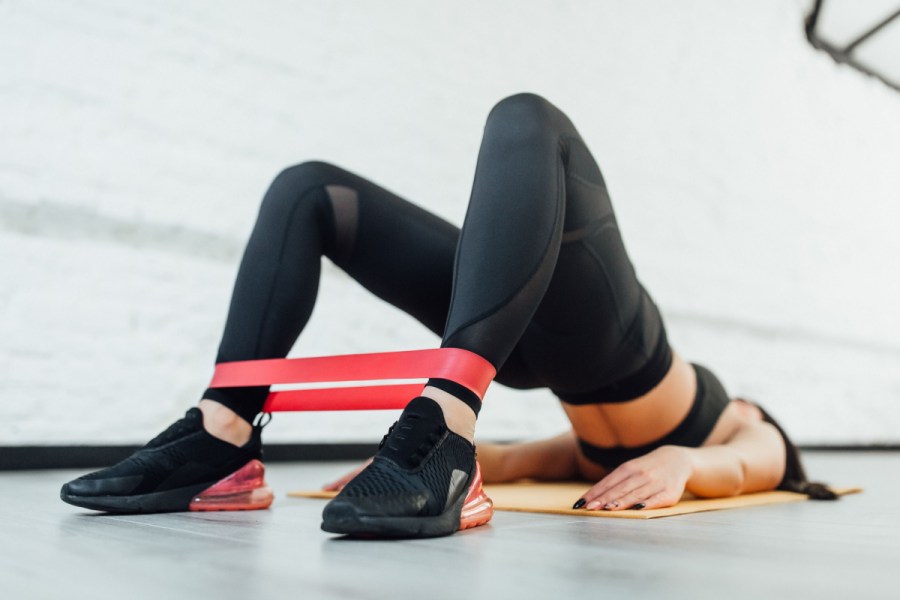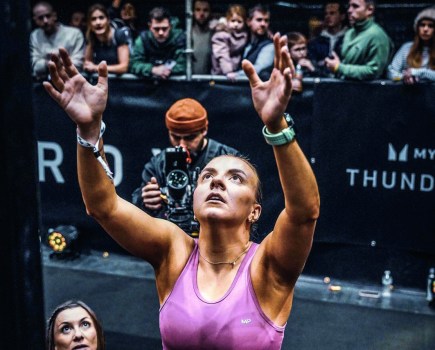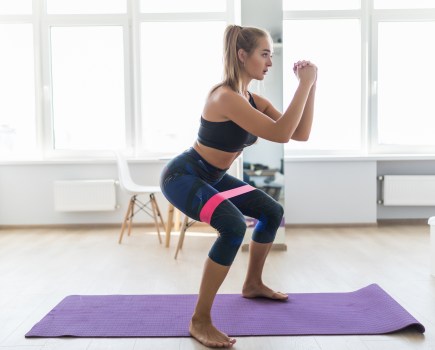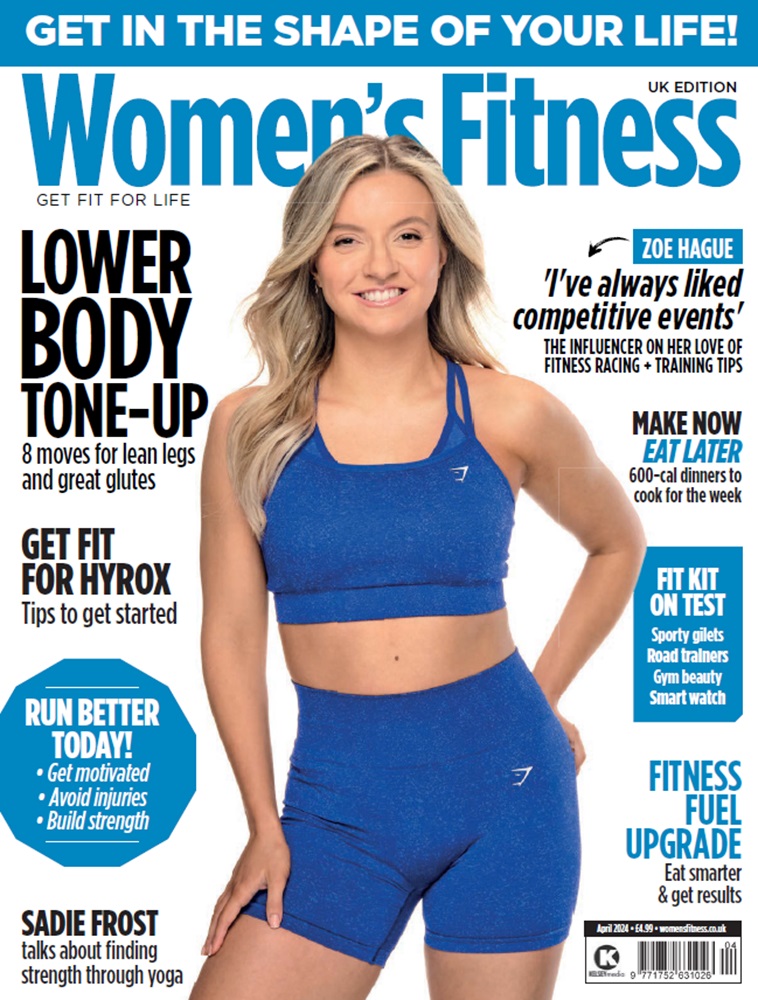For runners who want a low-kit way to work out at home, a resistance band workout could be the perfect option to boost strength and reduce injury risk…
Whether you like to run outdoors or on the treadmill, more miles can sometimes mean a greater risk of injury. So, how can you protect yourself from getting hurt? Along with smart shoes and stretches, resistance training is heralded as a great tool in any runner’s injury-resistance kit. It builds strength and stability, which means your body will be better able to handle load while running.
The good news? You don’t need a room full of dumbbells to get your strength workout fix. ‘Resistance bands are a great tool to use
for bottom (glute) strengthening – they activate and tone the muscles, building strength whilst preventing the ability to use momentum to complete a move,’ says Lucy Hilton, personal trainer, running coach and gait analysis practitioner at Enertor.
‘The more you stretch the band, the more intense the resistance gets and the harder the exercise becomes. So, working under tension – both for the lifting (concentric) and lowering (eccentric) phases – are controlled. This places a new demand on your muscles, which assists in correcting inefficient movement patterns.’
Benefits of resistance band workouts for runners
The exercises below are designed to strengthen and activate two major gluteal muscles: the gluteus maximus (glute max) and the, often overlooked in runners, gluteus medius (glute med). The glute max is the largest of the gluteal muscles. Its general function is to power large lower-limb movements for stepping up, jumping and running.
‘Working together with the hamstrings, a weak or late-firing glute max will result in the hamstrings helping out,’ explains Hilton. ‘This can lead to a build-up of tightness and pain in the hamstrings, but also possibly anterior knee pain, anterior cruciate ligament injuries and low-back pain.’
The glute med is located next to the hip. Its role is to support the body on one leg, preventing the opposite side of the pelvis from dropping during walking or running and allowing the thigh to rotate, helping absorb force as the foot hits the ground. ‘Sedentary lifestyles can cause weak glute med muscles, which, in turn, can lead to overuse injuries such as piriformis syndrome, groin pain, sacroiliac (SI) joint pain and iliotibial band (ITB) syndrome,’ adds Hilton.
How to do this resistance band workout for runners
Start with a low resistance band and increase the band strength as you become stronger and more used to the movement patterns. Try to incorporate these exercises into your exercise regime two-to-three times per week. Complete the moves in order, focusing on either the number of reps or time, or a bit of both for variety. If using reps, do three sets of 10 reps. If using time, start with 30 seconds (each side if necessary) and build to 60 seconds of each exercise.
The workout:
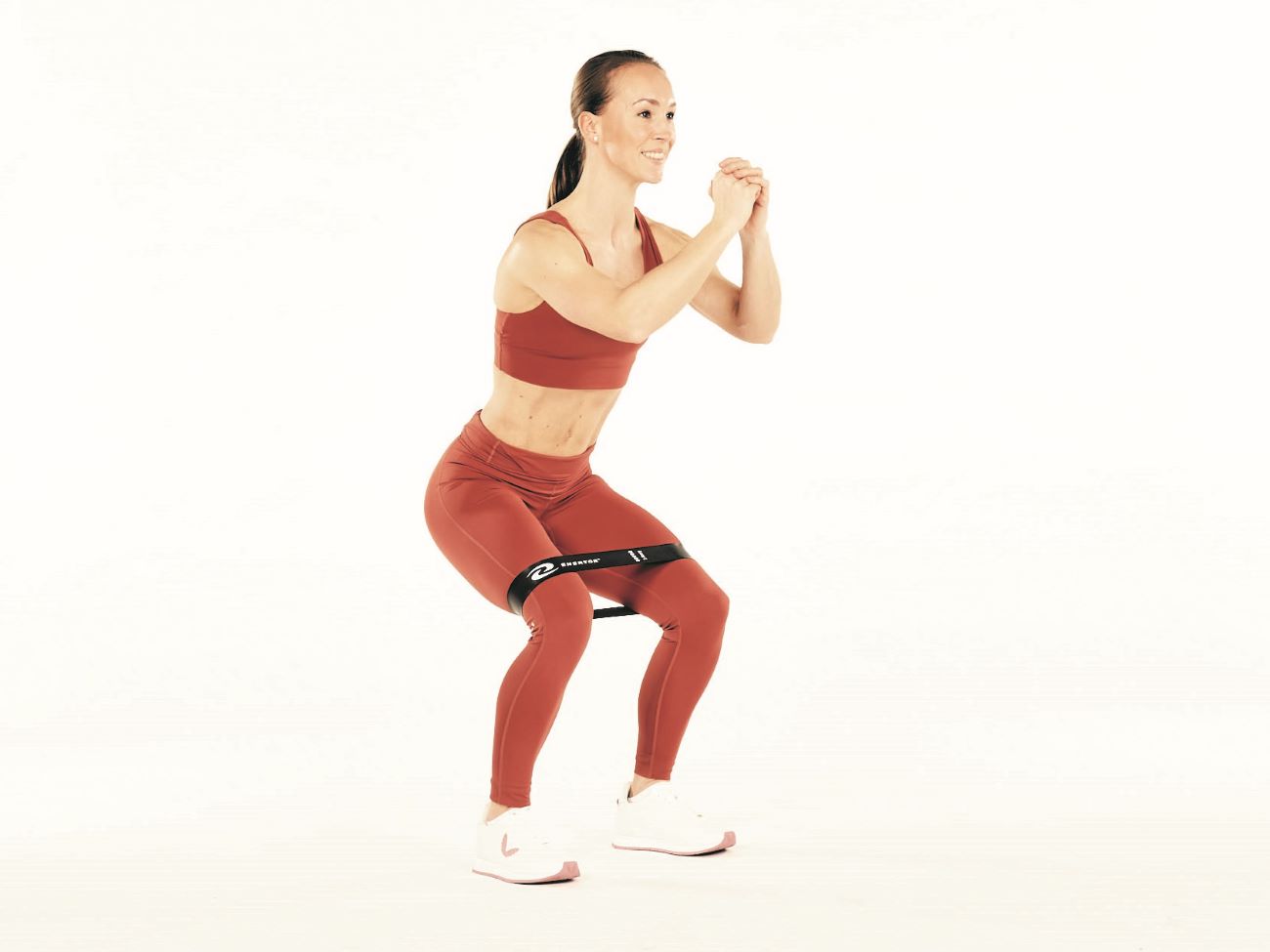
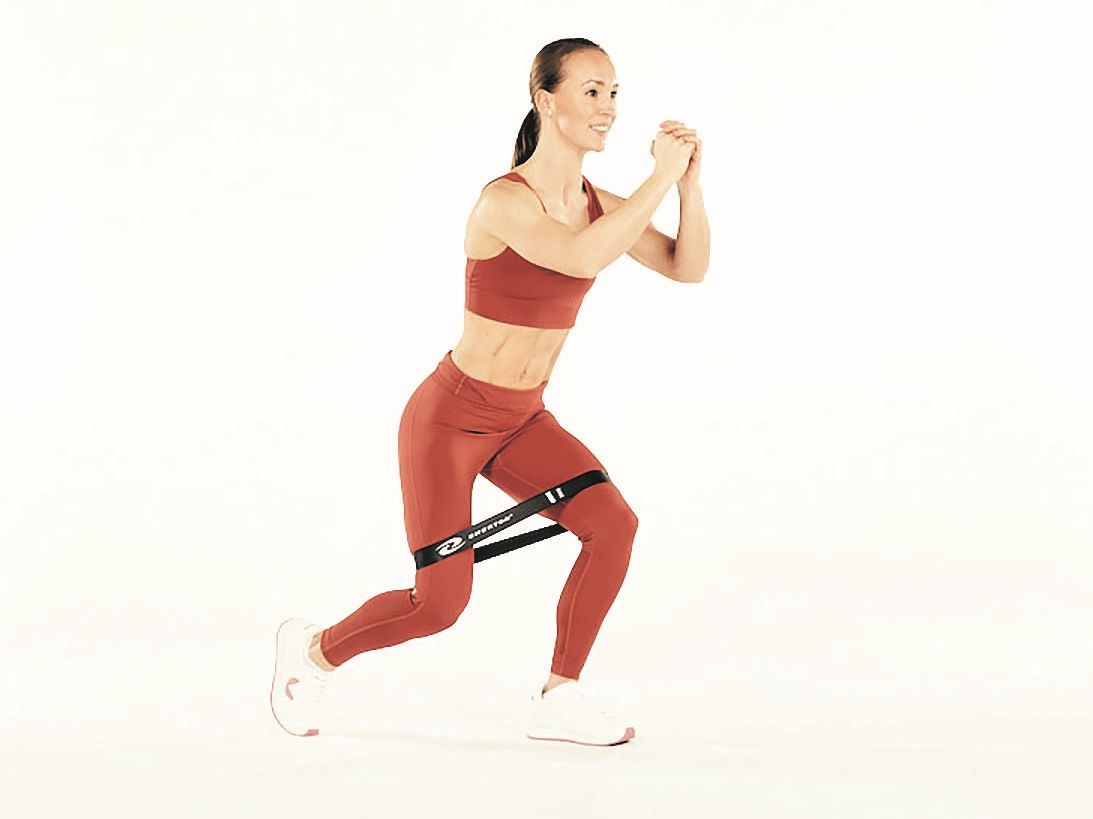
Two-way touches
Good for glute med activation and helps with hip abduction.
- Put the exercise band around both legs, just above the knees. Get into a slight squat position with feet hip-width distance apart – wide enough to create tension in the band (A).
- Lift the right foot and tap to the right, then to the centre, then to the back (B), and return to the centre.
- Repeat on the left leg. Continue alternating legs. Make sure your pelvis remains stable and stationary throughout.
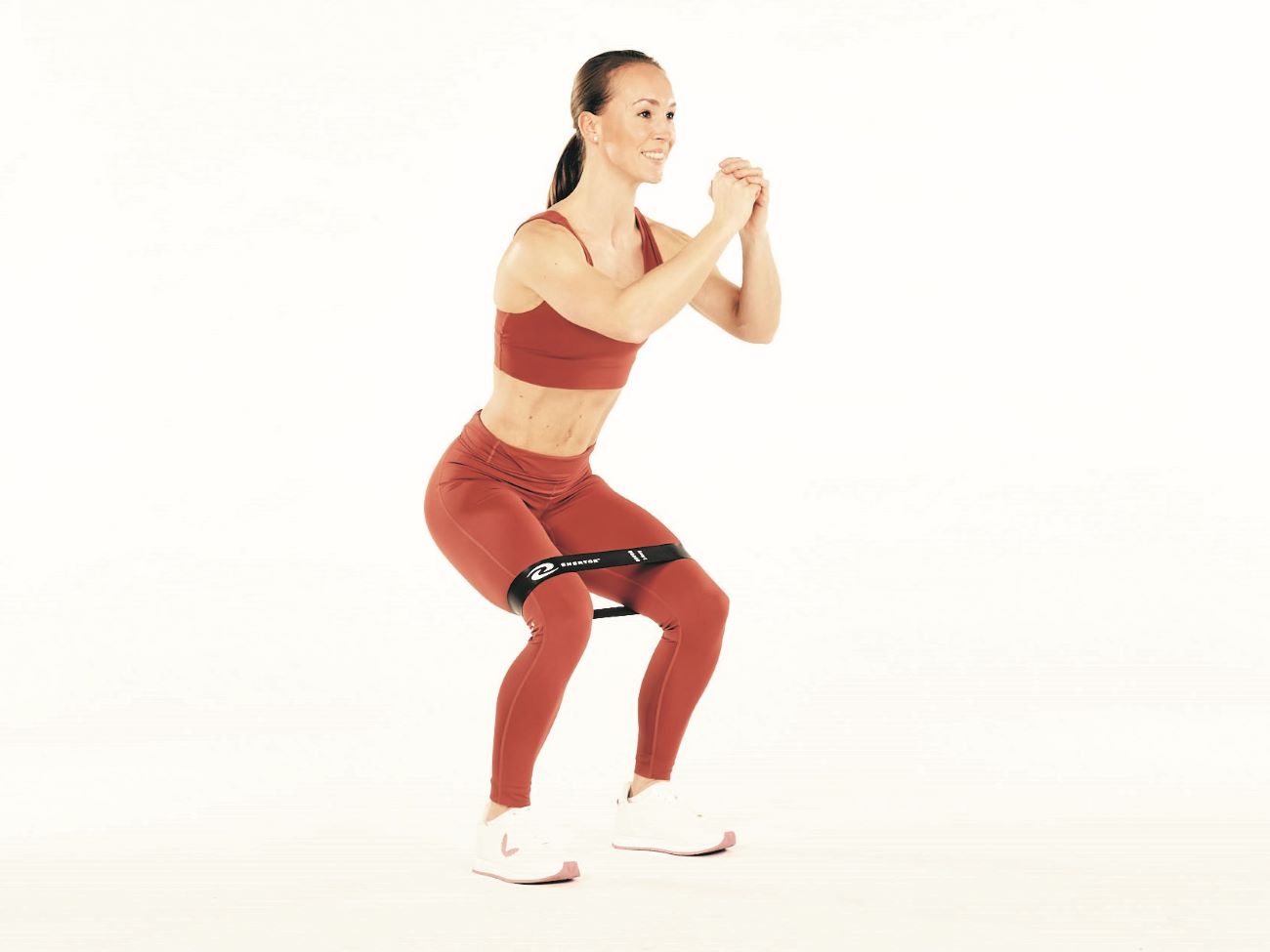
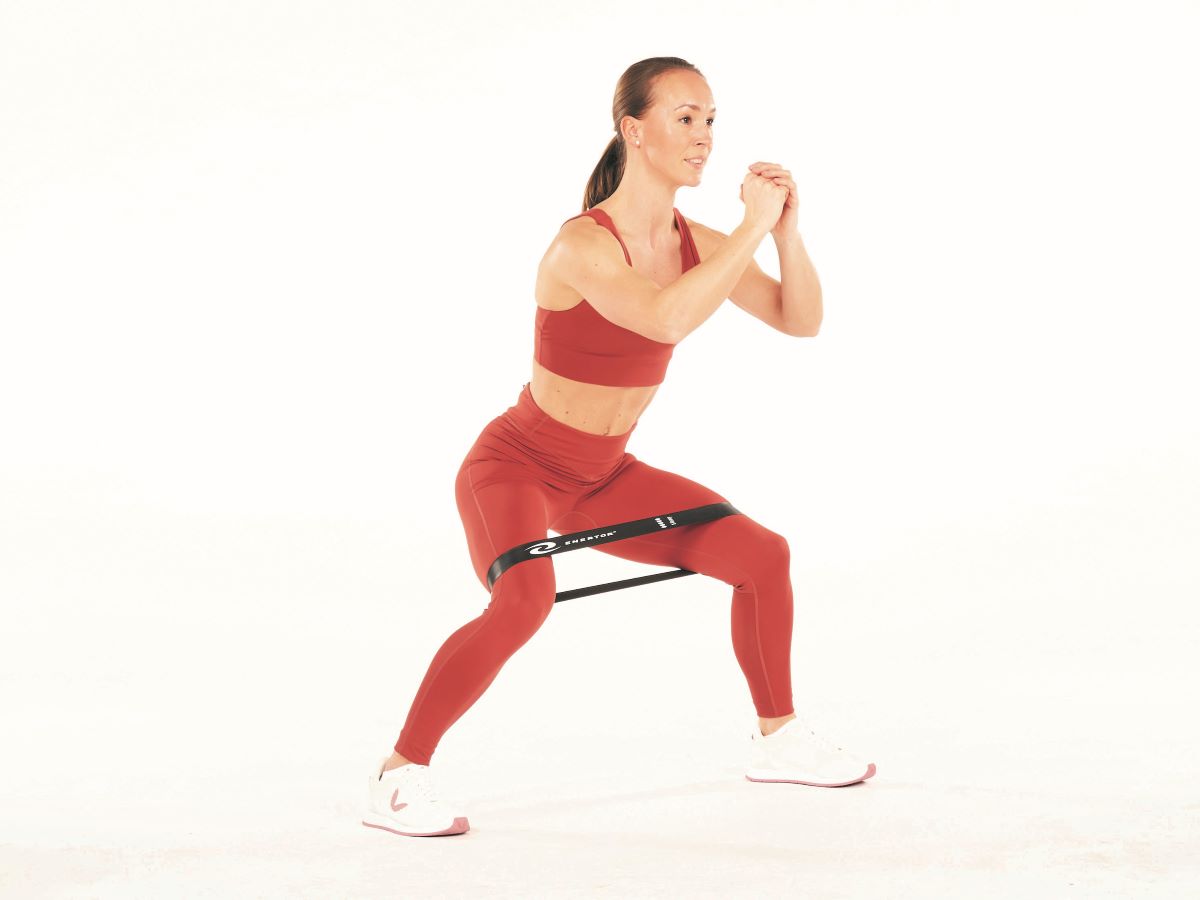
Monster walks
A great all-round strengthening exercise for your hips.
- Place a band around your thighs, just above your knees (A).
- Take your feet wider than hip-width distance apart to cause a resistance through the band (B).
- Keeping feet in this position, walk four steps forward then four steps backwards. Repeat for 30 seconds (build to one minute)
- Keep your pelvis tucked under to ensure you are only using your glutes. Keep a constant tension in the band.
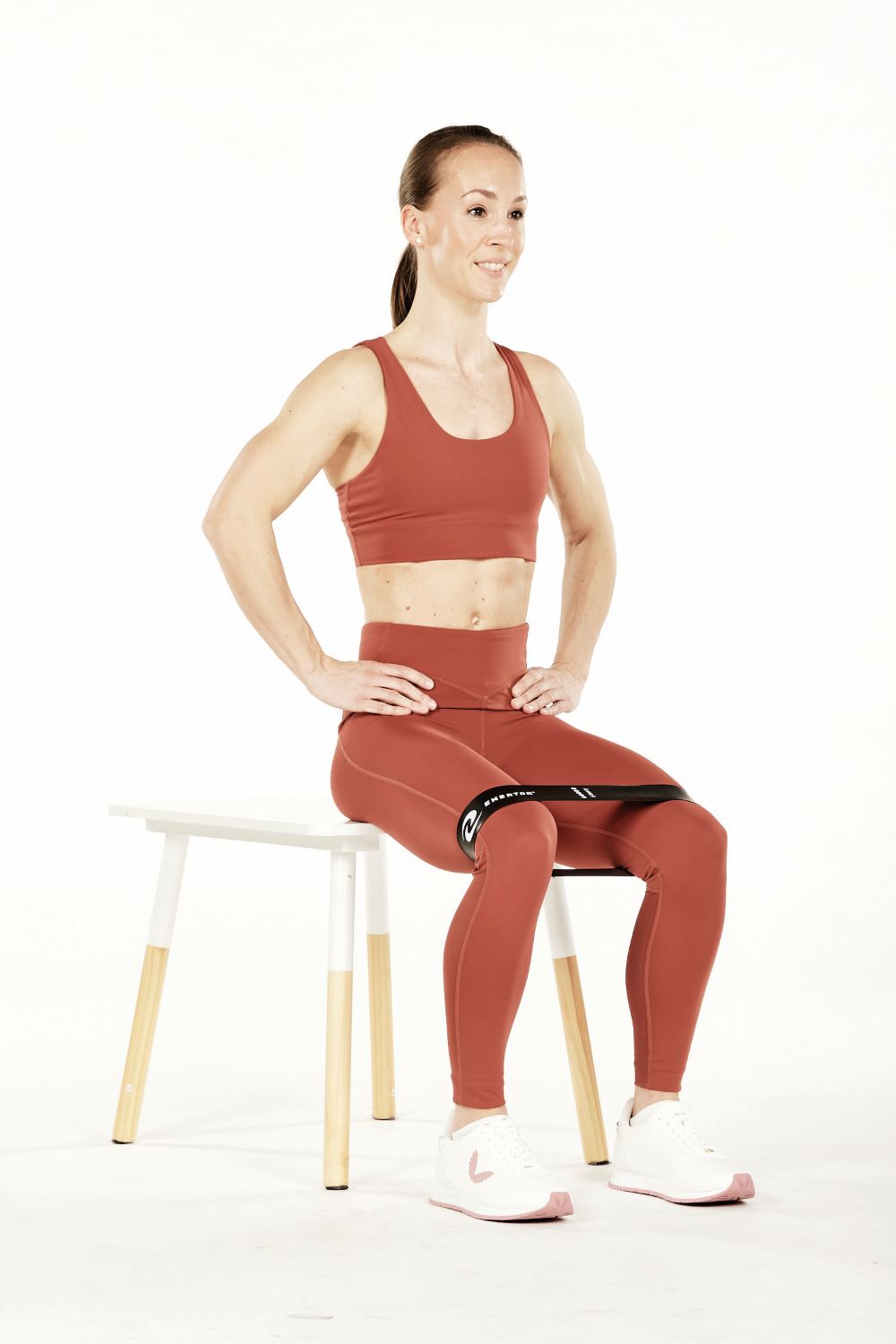
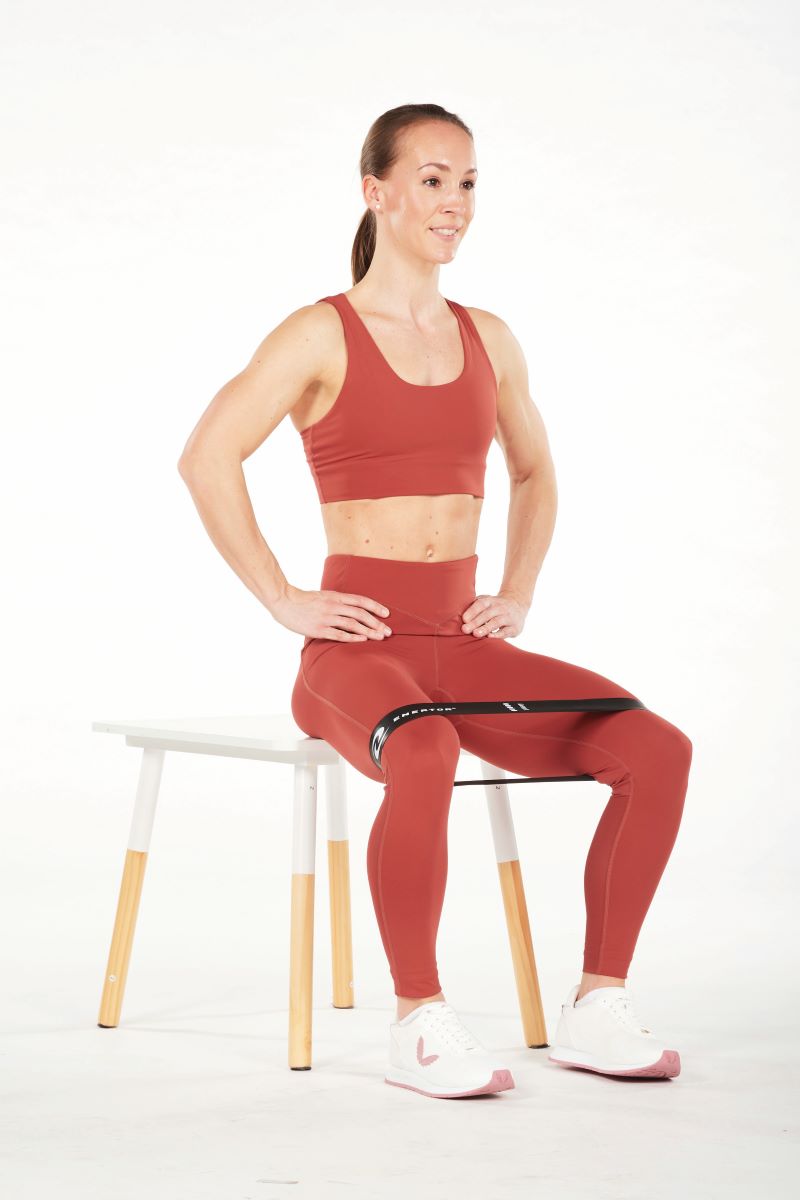
Seated clams
A great exercise to strengthen glute med and encourage good movement patterns.
- Sit on a chair with the exercise band above your knees, feet hip-width distance apart (A).
- Push your knees out and against the band’s resistance (B). Hold for five seconds, then come back to the start position.
- Repeat either 3 sets of 10-15 reps or aim for 30 seconds (building to a minute) of repetitions.
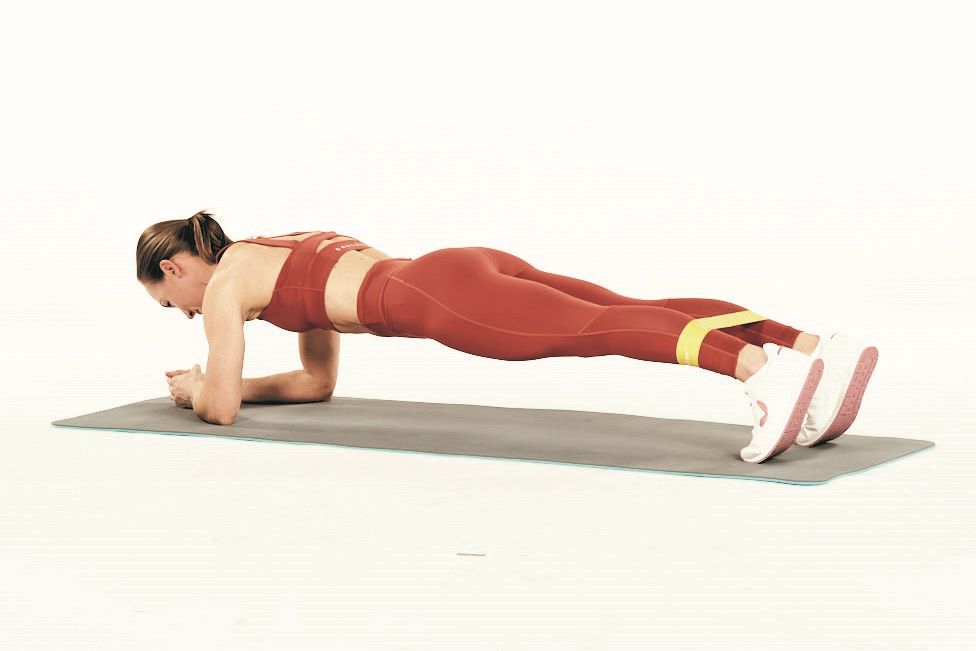
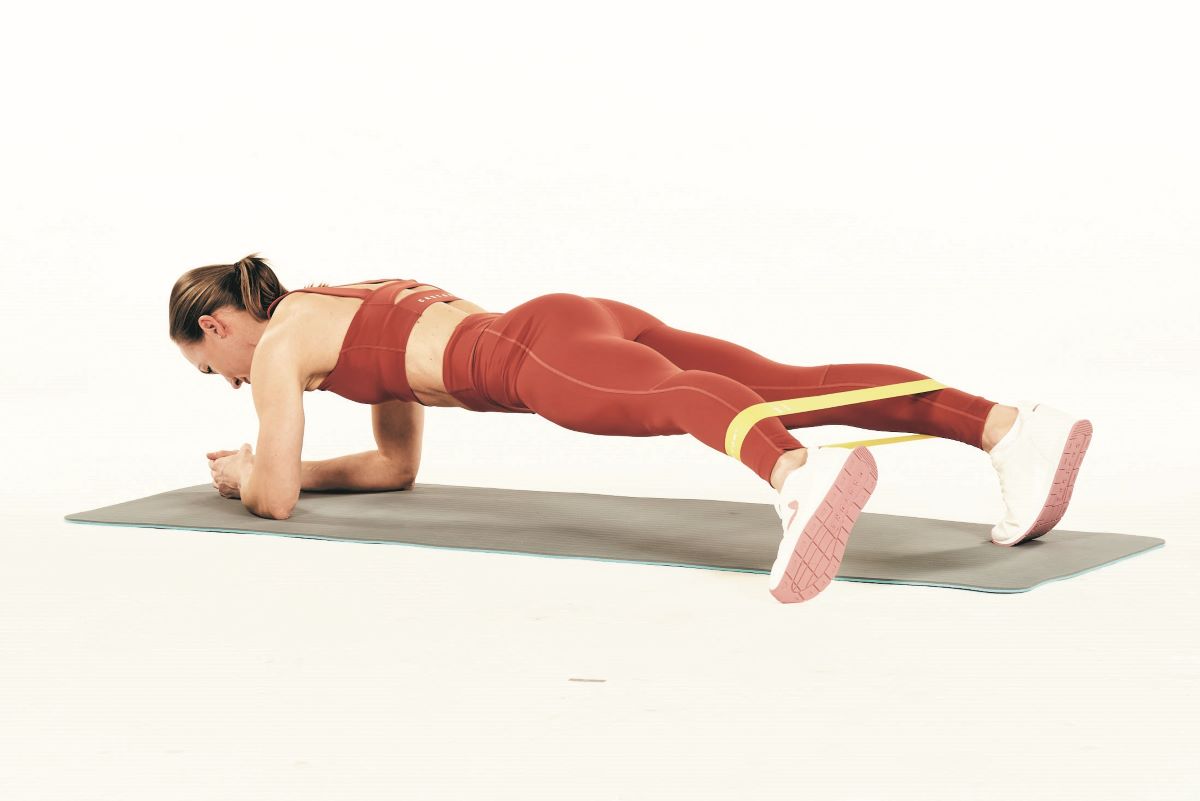
Plank side step
Good for strengthening the core and for hip abduction.
- Start in a plank position, resting on your forearms and toes, with a resistance band around your ankles. Have your feet far enough apart so that there is some resistance in the band (A).
- Tap your left leg out to the left (B), then back to its start position. Repeat with the right leg. Continue to alternate toe taps for 30 seconds, building to 60 seconds, or 10 reps each side.
- Make sure there is always some tension in the band and that you maintain the plank by engaging your core. If your lower back starts to sag, take a few seconds of rest and then resume.
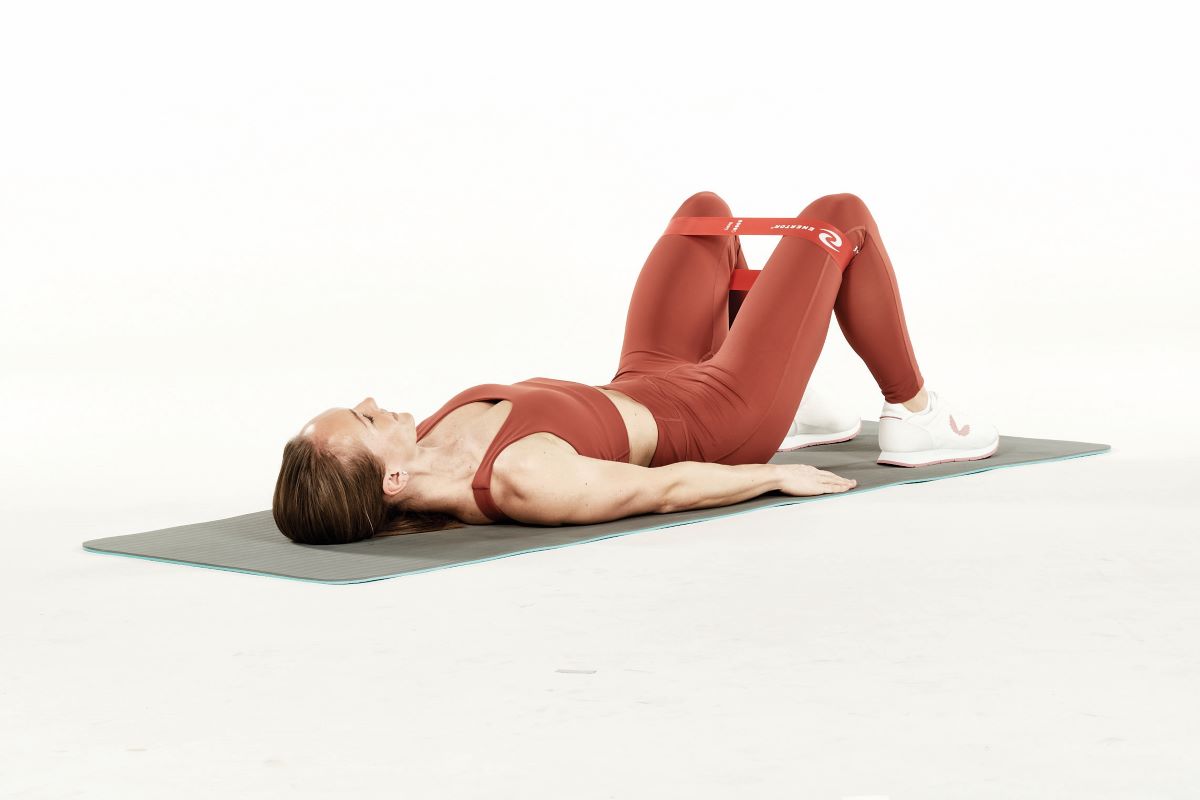
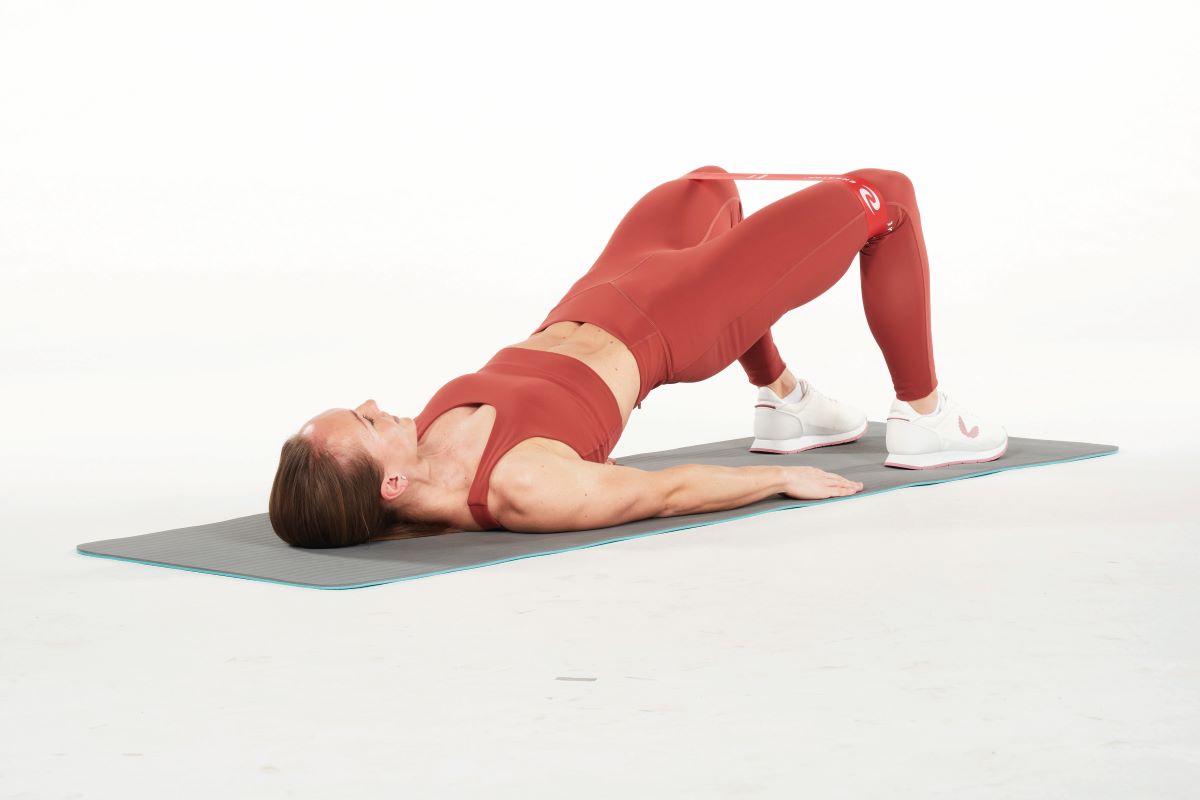
Banded glute bridge
Works hip extension and the main part of your glutes.
- Lie on your back with your legs bent, feet flat on the mat and an exercise band around both legs, just above the knees (A).
- Putting weight through your heels, push your hips up as far as you can into a glute bridge (B).
- Push your knees into the band to increase the resistance. Hold for 10 seconds, then come back to the start position. Aim for a set time or number of reps.
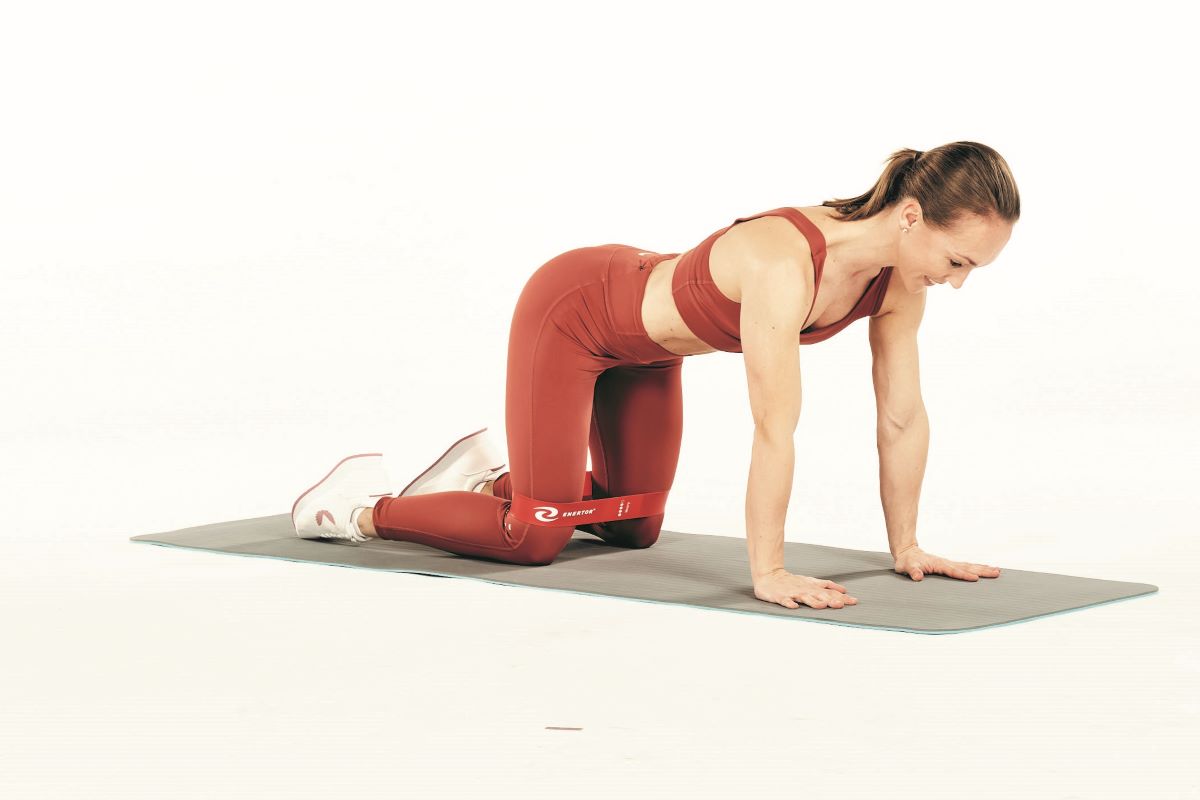
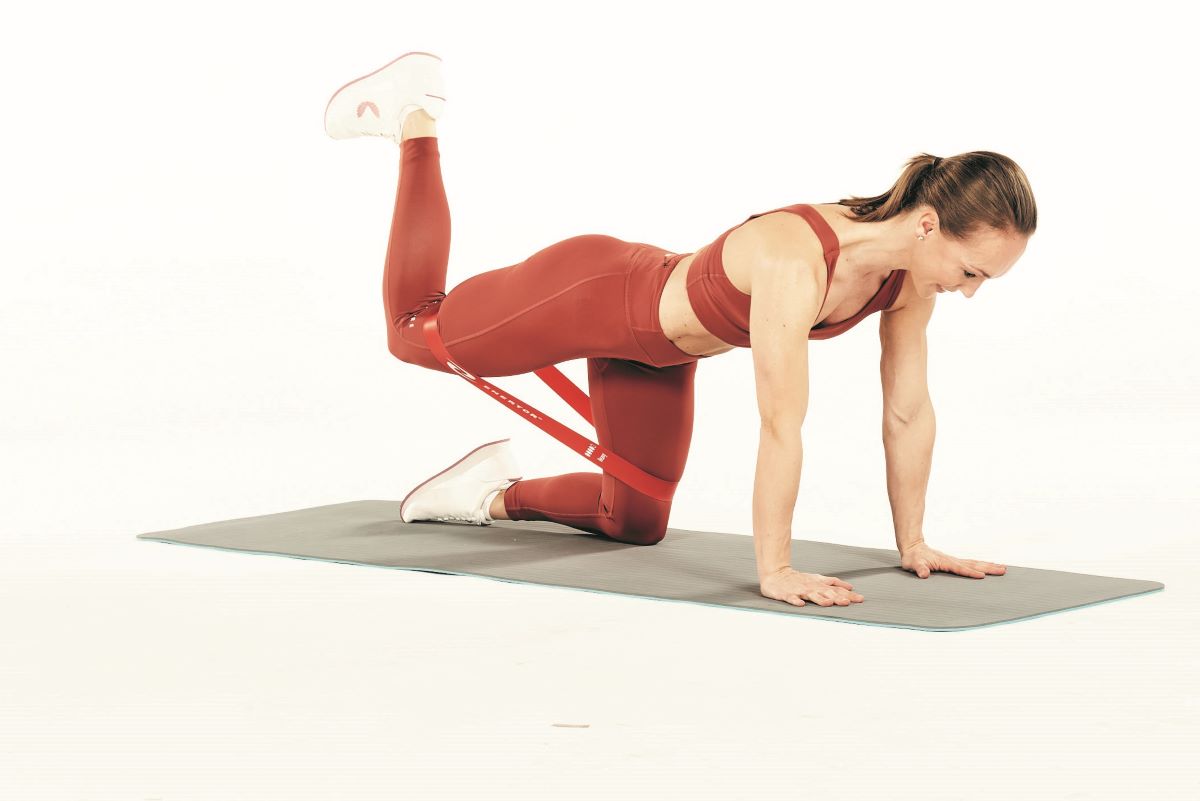
Donkey kick
Good for strengthening your glute max muscle.
- Place a band around both legs just above the knees. Kneel on the floor and place hands under shoulders, knees under hips (A).
- Making sure your back stays in alignment (no arching of the lower back), lift the right knee off the floor leading with your heel (B).
- Imagine you’re trying to touch the ceiling with the bottom of your foot.
- Lower under control, then raise again. Repeat all reps or for time on the right leg, then repeat with the left.
Words: Sarah Sellens | Model: Nicki Pettit | Photography: Eddie Macdonald | Clothing: Castore Rosewood Active Air Leggings (£65) Longline Bra (£50) and White Retro Runners | Kit: Enertor resistance bands

